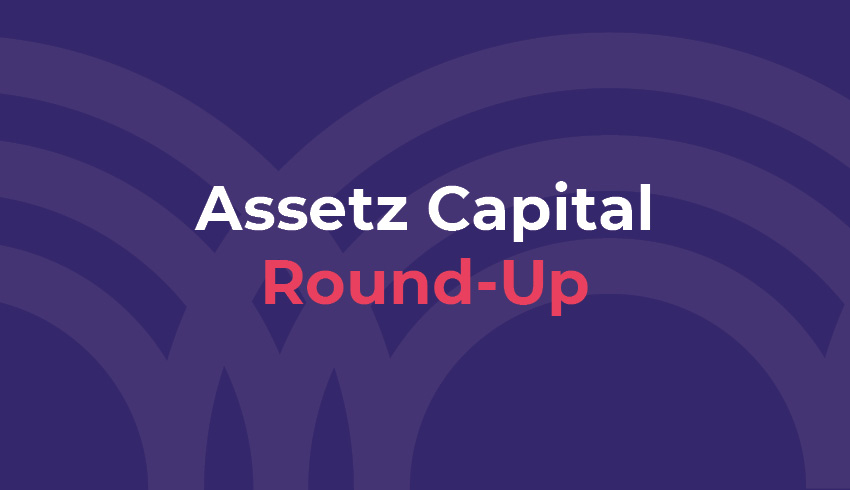The bridging finance sector has changed enormously over the last 20 years. Bridging has quickly become mainstream and is constantly growing. In today’s economy, after the 2008 Financial Crisis and uncertainty post-Brexit fuelled by the ongoing pandemic, banks are being told to re-capitalise rather than lend, leaving many SMEs and property developers faced with finding alternative finance solutions. This is where bridging finance comes in – by offering flexible, fast, short-term lending solutions to borrowers.
Despite the exponential growth of the bridging sector in the last decade, the concept of bridging can still cause confusion for first-time borrowers as this type of transaction is extremely fast-paced, so we’ve created a ‘beginners guide to bridging’ to explain the basics of what this short-term funding option can offer and keep you as well-informed as possible.
So, what is a bridging loan?
A bridging loan or bridging finance is a short-term, interest-only loan, which is usually secured against property and can be used by individuals and businesses for purchases, refinance or releasing equity until permanent, long-term funding or their next stage of financing becomes available, or they sell a property.
They are usually available up to 75% of the property’s value and the loans can be taken for a term of up to 24 months. Finance is available on all types of residential properties such as HMO (house in multiple occupancy), Holiday Lets, as well as semi-commercial and commercial property types, for development projects and land purchases.
Bridging loans are fast, flexible and usually secured, which offers borrowers a quick cash injection that they may have been unable to secure elsewhere within a small timeframe.
Bridging loans can come with either fixed or variable interest rates. These rates are stated on a monthly, rather than an annual basis, but do not always have to be charged on a monthly basis. Borrowers can repay the interest in different ways depending on their needs.
There are three main ways it can be charged. These are:
- Monthly –borrowers pay the interest monthly. At Assetz Capital, borrowers will need to provide evidence of income and we will carry out an affordability assessment to repay interest monthly.
- Deferred or rolled up – borrowers pay all the interest at the end of the bridge loan. There are no monthly interest payments.
- Retained – where the interest payments are included within the lending facility, and then the borrower will pay it all back at the end of the bridge loan.
The flexibility of how the interest is charged can offer huge advantages to the borrower. For example, a borrower may choose to have their interest rolled up because the property they have purchased is not generating income immediately as there are repairs or renovations to be done so they are unable to make monthly interest payments.
Bridging loans also usually carry different fees in addition to the interest, which can impact the overall cost to borrowers - so, it’s important that borrowers are aware of any attached fees to the loan and it’s important that brokers make these fees clear to their customers. For example, here at Assetz Capital there are no early repayment charges or minimum charging period.
Why do people use bridging?
Bridging finance is on the rise with an increasing number of businesses and individuals using bridging loans to take advantage of opportunities that arise, such as:
- To buy at auction – a time-sensitive transaction, with normally anything between 21-28 days to complete from the date of the auction
- To refurbish and convert a property – where a property may need some works to enable it to be mortgage-worthy or where alterations will maximise value and rental income
- To finish a development more cost effectively as a form of development exit finance
- To support the funding of their next project through development exit finance
- To purchase a property that would not secure a mortgage in its existing condition with a mainstream lender
- Planning permission or change of use for security is required which enables investors to purchase and exit the loan without penalties for early settlement
- To bridge a shortfall of funding between buying and selling property when a sale is delayed or the chain has broken down – bridging allows borrowers to progress with new purchase (so not to miss out) whilst existing security is on the market to be sold, or if the original sale has collapsed
- Urgent finance required – to support cashflow, or resolve an emergency situation
Please note that Assetz Capital does not offer regulated mortgage contracts.
Bridging finance gives borrowers some breathing space until they access other funds, sell a property or find alternative, long-term finance. One of the biggest advantages to using bridging finance is the quick fix that it provides to businesses in need of short-term funding.
There are two types of bridging loans
Closed bridge: The borrower has a predetermined time frame that has already been agreed on by both parties which will be a set date when the loan will be repaid. And because there is a set date, closed bridge loans are more likely to be accepted by lenders as it gives more certainty about the loan repayment. For example, the borrower has already exchanged to sell a property and the completion date has been fixed, so the sale of that property will repay the bridging loan, resulting in a high degree of certainty that the loan will be repaid.
Open bridge: The borrower sets out a plausible plan to the project, which proposes a realistic exit strategy to repay their loan, typically by sale or refinance, but there is no set date for settling the loan at the outset. There will be a clear cut-off point that the loan must be repaid by and to ensure the security of their funds, most bridging companies deduct the loan interest from the loan advance. Due to the uncertainty on loan repayment, lenders may charge a higher interest rate for these types of bridging loans.
Closed bridging loans are likely to be suitable for buyers whose property chain may have broken down – perhaps their buyers have pulled out while they are in the process of buying a new property, they can use a bridging loan to ‘bridge the gap’ between the purchase and the sale.
Open bridging loans are preferred by borrowers who are uncertain about when their expected finance will be available. These borrowers tend to be landlords or developers who cannot guarantee timings (although they will still need to provide a schedule of works) and who need the loan for a longer period.
Who can use a bridging loan?
Bridging finance can be used in both commercial and residential property transactions. Borrowers can be homeowners or homebuyers, landlords, property developers or investors – whether they are buying a property, building a property, or raising funds for a refurbishment project, something they all have in common is a need for fast, short-term finance secured against a property.
How do they work?
At Assetz Capital, bridging loans are always secured loans. This means borrowers have to have a high-value asset to get one, such as property or land.
For example:
A borrower requires funds to purchase and refurbish a new investment property. The property is in need of some light repair work so that they can maximise the value of the property, whilst meeting all legal requirements for the property to be tenanted.
The intended works are non-structural and do not require planning permission (which typically equates to less than 15% of the current market value).
Once these renovations have been made to the property to improve it, the borrower then intends to sell the property. A bridging loan, which could be facilitated in days, would allow the borrower to purchase the property, fund the refurbish work and exit with no penalty fees and indeed provide any additional flexibility that the project would need should it finish early, resulting in them exiting earlier than they intended too.
How much can customers borrow?
There are a high number of bridging finance loan providers in the market as well as high street lenders. They can all usually arrange a bridge within a matter of days for a loan of up to 75% of the property’s value. The amount that customers can borrow is assessed on the borrower’s circumstances, but every lender will have its own criteria. Here at Assetz Capital, bridging loans are available from £150,000 to £5m.
Our property experts will look at each bridging loan application on an individual basis. So, when it comes to agreeing a bridging finance loan, we look at affordability and if borrowers need a loan to bridge a gap between a purchase and the sale of an existing property, we will examine several things; loan to value ratio; any revenue stream; any equity or additional savings; the value of the existing property together with the proposed exit.
What are the benefits of bridging loans?
- Bridging loans are quick to arrange – at Assetz, you could get a decision in principle within 24 hours of applying;
- Borrowers can take advantage of time-sensitive opportunities
- Flexible lending criteria
- It is short-term – bridging loans are designed to temporarily bridge the gap when there is a shortfall in funding
- Borrowers can access large sums secured against property
- You can have a lot of flexibility if needed
Choosing the right lender for you… What to look for.
From large banks to smaller specialist lenders, there have never been more lenders specialising in bridging finance. This means the first task is to choose the right lender for you.
First and foremost, speak to your broker (if you have one). Relationships are critical in any types of finance, and it is no different at Assetz Capital. We work incredibly close with our Intermediary partners to best serve our borrowers and give them the best solution possible with the most competitive terms we can offer. By speaking to your broker, you can leverage their knowledge of the marketplace so that you can access the most suitable funding to your situation.
Understand the overall cost.
It’s important to understand what the overall cost of finance will be by considering more than just the interest rates. It’s also important to review the arrangement fees and find out whether there are any exit fees and other related fees such as administration fees etc.
Look out for any hidden fees or charge.
Some lender’s fee structure can make a significant difference to the overall cost of the loan, so make sure you are considering all the attached fees. There are no hidden costs or fees with Assetz Capital, we deliver on what we say, and we are always fully transparent.
Time is of the essence.
Speed is a big factor to consider when comparing lenders, a broker should be able to help with this. If you require finance quickly, it is important to look at the lender’s turnaround times. Bridging by nature is quite a quick transaction, Assetz Capital’s experienced team really understand this, which is why we provide a credit-backed decision in principle usually within 24 hours.
Interest rates
Interest rates are obviously a key factor for any borrower when considering a bridging loan. Here at Assetz Capital, we review the individual circumstances of each loan and offer bridging rates from 0.65% per calendar month.
If you think a bridging loan is right for you, please call our New Business Team on 0800 470 0430 or simply complete the quick enquiry form below and we’ll get straight back to you.





